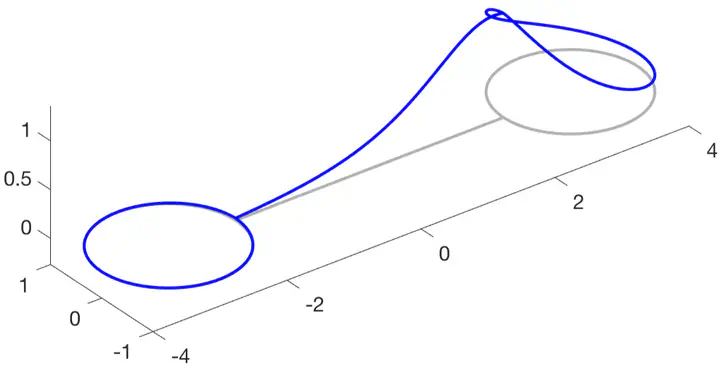
Abstract
We consider the bifurcations of standing wave solutions to the nonlinear Schrödinger equation (NLS) posed on a quantum graph consisting of two loops connected by a single edge, the so-called dumbbell, recently studied by Marzuola and Pelinovsky. The authors of that study found the ground state undergoes two bifurcations, first a symmetry-breaking, and the second which they call a symmetry-preserving bifurcation. We clarify the type of the symmetry-preserving bifurcation, showing it to be transcritical. We then reduce the question, and show that the phenomena described in that paper can be reproduced in a simple discrete self-trapping equation on a combinatorial graph of bowtie shape. This allows for complete analysis by parameterizing the full solution space. We then expand the question, and describe the bifurcations of all the standing waves of this system, which can be classified into three families, and of which there exists a countably infinite set.